One of my all-time favorite artists from the Renaissance era, and indeed from any era, is Leonardo da Vinci. Among his many masterpieces, “The Last Supper” is particularly intriguing.
What often surprises people—especially those familiar with the Florentine roots of many Renaissance masterpieces—is that this iconic painting isn’t found in Florence. Instead, it graces a wall in Milan, housed in the serene environment of a monastery. Read on as we delve deeper into the actual location of “The Last Supper,” how you can experience this awe-inspiring artwork today, and what makes this painting so timeless and iconic.
Table of Contents
- Where Was The Last Supper Painted? A Deep Dive Into Leonardo da Vinci’s Masterpiece
- A Daring Technique: Leonardo’s Experiment
- The Last Supper: Unpacking The Masterpiece
- Related Questions
Where Was The Last Supper Painted? A Deep Dive Into Leonardo da Vinci’s Masterpiece
One of the world’s most recognized and revered art pieces, Leonardo da Vinci’s “The Last Supper,” invites countless eyes to delve into its intricate details, intricate symbolism, and historical context.
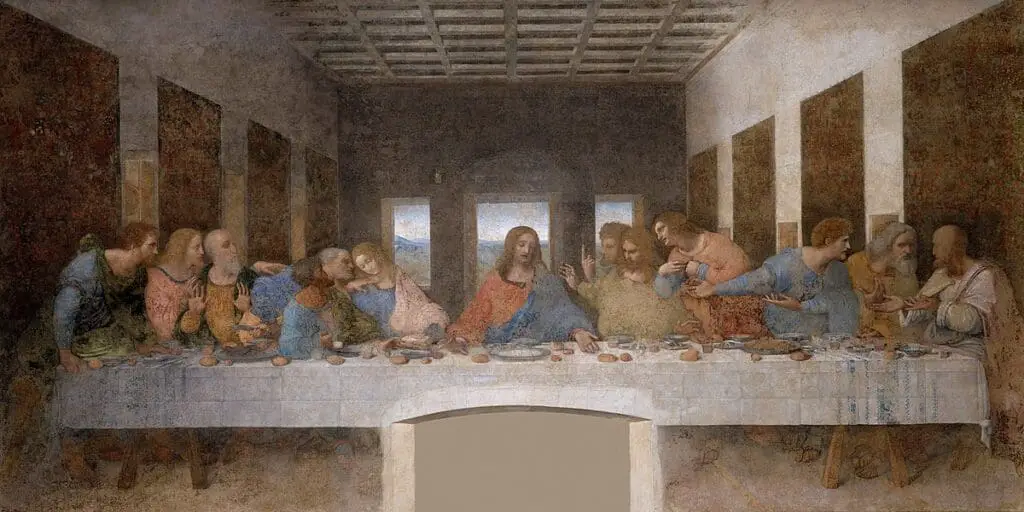
If you’ve ever wondered where this iconic mural was created, you’re in for an enlightening journey.
The Last Supper was painted on the wall of the Santa Maria delle Grazie dining hall in Milan, Italy, and its rich history mirrors the complex tapestry of Italian Renaissance art, politics, and religion.
The Magnificent Locale: Santa Maria delle Grazie
Nestled in the heart of Milan, Italy, the Santa Maria delle Grazie is a church and Dominican convent that is a testament to Italian Gothic and Renaissance architecture.

Commissioned by the Duke of Milan, Francesco I Sforza, it was completed by renowned architects Guiniforte Solari and Donato Bramante. The latter is known for contributing to the famous St. Peter’s Basilica in Rome.
A UNESCO World Heritage Site, Santa Maria delle Grazie beckons tourists and art lovers alike to marvel at its splendor.
The Convent’s Dining Hall: A Sanctified Canvas
The dining hall, or refectory, of Santa Maria delle Grazie holds the crown jewel—The Last Supper. While it may seem unusual for such an iconic art piece to adorn a simple dining hall, it was customary during the Renaissance to embellish convents and churches with religious art.
The mural covers an end wall, measuring an impressive 460 cm × 880 cm (180 in × 350 in).
Imagine walking into a room and being immediately enveloped by such a monumental piece of art history—this is the immersive experience that Santa Maria delle Grazie offers.
A Daring Technique: Leonardo’s Experiment
Leonardo da Vinci was never one to follow the status quo. Instead of traditional fresco techniques that applied watercolors on wet plaster, Leonardo painted directly onto the stone wall with tempera paint and mixed media.
This decision, while innovative, would lead to the mural’s quick deterioration and the need for numerous restorations over the centuries.
The Man Behind The Brush: Leonardo da Vinci
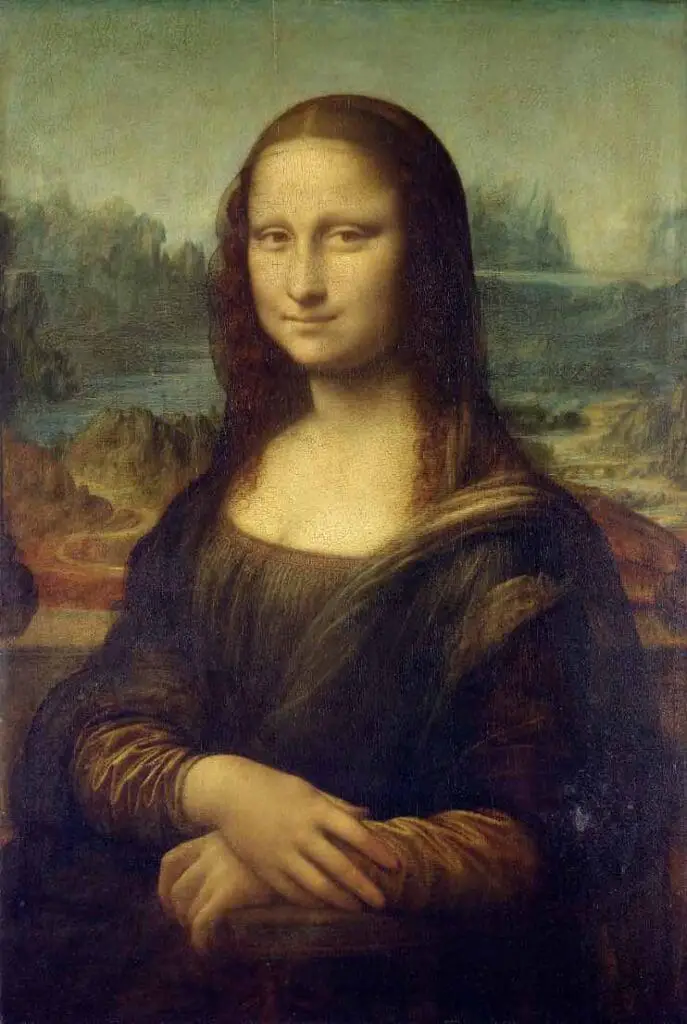
Leonardo da Vinci, born in 1452 in Vinci, Italy, was a polymath who excelled in painting, sculpting, engineering, anatomy, and more. Renowned for works like the “Mona Lisa” and “Vitruvian Man,” Leonardo’s genius permeated various fields, marking him as one of the most versatile talents in human history.
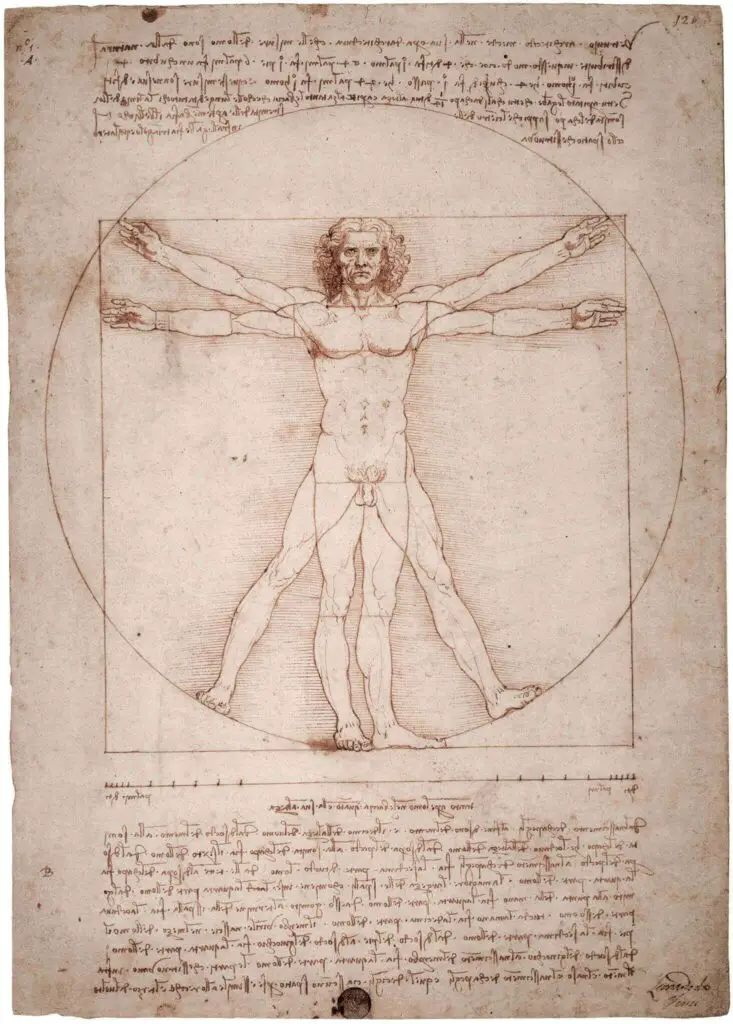
Commissioned by the Duke of Milan, Ludovico Sforza, Leonardo took up the ambitious project of painting The Last Supper. The Sforza family was a powerhouse in Renaissance Italy, ruling Milan for nearly a century. Ludovico was an ardent patron of the arts, supporting not just Leonardo but other eminent artists and musicians.
The Quest For Judas’ Face And The Last Supper
Leonardo was meticulous in his approach to his art. To capture the face of Judas, one of the most despised figures in Christian lore, Leonardo went to the prisons in Milan to find a suitable model.
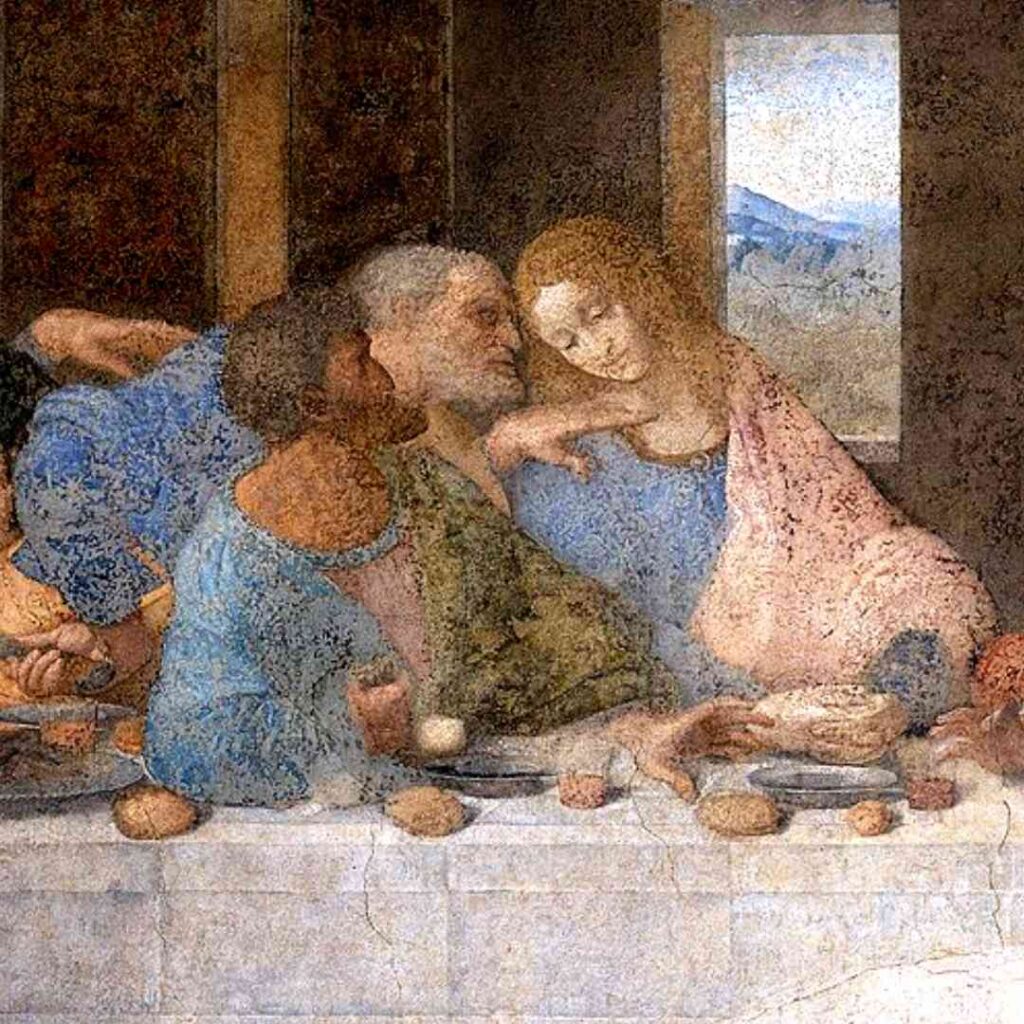
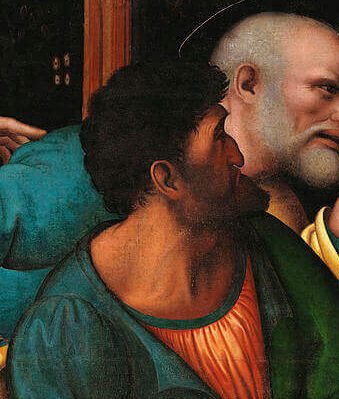
This excursion indicates his commitment to detail and the psychological depth he sought to portray in his characters.
The Last Supper: Unpacking The Masterpiece
“The Last Supper” captures the dramatic moment when Jesus announces that one of his disciples will betray him. The painting is lauded for its emotional intensity and complex narrative, conveyed through posture, facial expressions, and symbolism.
Leonardo’s technique of using perspective is ground-breaking, focusing on the vanishing point behind Jesus’ head, drawing the viewer’s eye towards the center of the emotional storm.
The arrangement of the disciples in groups of three on either side of Jesus enhances the composition’s symmetry and balance, while their reactions provide a vivid storytelling tapestry.
Experience It Yourself: Visiting The Last Supper
If you’re planning a trip to Milan, a visit to Santa Maria delle Grazie is essential. Due to the mural’s fragile condition, entrance is restricted to a limited number of people under strict climate-controlled conditions, and it’s advisable to book tickets well in advance.

For those looking for an enriched experience, private guided tours are available that also include a visit to the adjacent Church of Santa Maria delle Grazie. The guides offer deep insights into this remarkable site’s art, history, and architecture.
“The Last Supper,” set against the backdrop of the Santa Maria delle Grazie in Milan, is a harmonious blend of art, history, and spirituality. More than just a painting on a wall, it is a testament to the genius of Leonardo da Vinci and the turbulent times that shaped its creation.
Understanding the physical and historical context of “The Last Supper” enhances our appreciation of this monumental work.
Through its intricate details and emotional depth, it transcends its material form on the dining hall wall to become a timeless symbol of artistic endeavor and spiritual contemplation.
Anita Louise Art is dedicated to art education, great artists, and inspiring others to find and create their art. We love art that uplifts and inspires. #ArtToMakeYouSmile! #ArtToMakeYouHappy!
If you want to see any of my art, you can find out more by clicking here. If you are interested in what inspires me and my paintings, you can discover more by clicking here.
We have a free newsletter and would love you to be part of our community; you can subscribe to the newsletter by clicking here. If you have any questions, I would be happy to talk to you. You can reach me, Anita, by clicking here.
Subscribe to our Anita Louise Art YouTube Channel filled with great videos and information by clicking here.
Join us for our podcast “5 Minutes With Art.” Spend just 5 minutes a week with us to discover and learn about great art and artists. You can find out more about our podcast by clicking here.
Related Questions
Guide To The Last Supper Picture By Leonardo da Vinci
Leonardo Da Vinci’s Last Supper painting is located in Milan, Italy. Even though the painting was so badly damaged, it has been restored and is still considered one of the greatest Renaissance masterpieces ever created. The Last Supper depicts the emotions of the apostles as Christ told them that one of them was going to betray them. The painting is filled with symbolism and emotion.
You can read more by checking out the blog Guide To The Last Supper Picture By Leonardo da Vinci by clicking here.
What Inspired Leonardo da Vinci To Paint The Last Supper?
Duke Ludovico Sforza commissioned Leonardo to paint the Last Supper mural. What makes the Last Supper mural so unique is that he painted it at the exact time when Christ told the Apostles during The Last Supper meal that one of them would betray him. Leonardo showed the apostles’ reactions, including Judas, who betrayed Christ.
You can read more about What Inspired Leonardo da Vinci To Paint The Last Supper? by clicking here.
Is Mary Magdalene In The Last Supper Painting?
Leonardo Da Vinci’s revered work of art, The Last Supper (1495 – 1498), has fascinated viewers for centuries with its depiction of Jesus surrounded by the 12 apostles at his final meal before the crucifixion. Though speculation abounds whether Mary Magdalene was present amongst them, no female figures can be found in this renowned mural inside Milan’s Santa Maria Delle Grazie monastery – a must-see destination for any admirer of fine Italian artistry!
You can learn more by reading Is Mary Magdalene In The Last Supper Painting? by clicking here.

